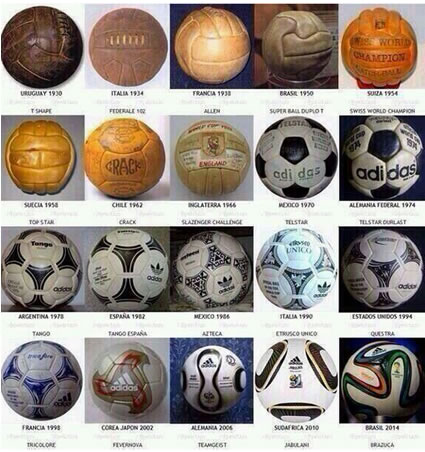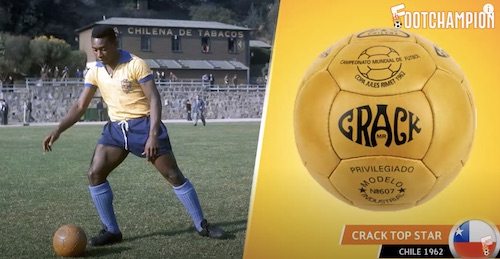History of soccer ball: Let’s just say the history of the soccer ball is a long one. The soccer ball has come a long way over the years, from being a very heavy leather ball that must have felt almost like a rock when you kicked it, to a light and soft ball that flies through the air almost too fast for goalkeepers to get their hands on. Remember during the World Cup when goalkeepers were complaining about how the soccer ball moved in the air?
Here are all the soccer balls used in the World Cup from 1930 to 2014. This gives a nice history of the soccer ball, even though it just focuses on the adidas balls. And you’ll notice that adidas and not Nike is the brand that owns the rights for the World Cup soccer ball….Yes, I’m sure that adidas paid FIFA a lot of money for the right to be the official World Cup soccer ball.
But what stands out is that the soccer ball hasn’t really changed all that much, especially in the last forty years. It’s still a round ball made of leather. Really, the history of the soccer ball is about minor and subtle changes. The weight of the ball change quite a bit over the years – enabling players to smash it with more power – see Cristiano Ronaldo for instance.
I wonder what the soccer ball will look like in ten, twenty or fifty years from now? One thing that has changed recently though is the colors of the soccer ball. More and more you see bright colored soccer balls with various patterns.

One soccer ball that’s missing from the picture is the indestructible soccer ball…, but they haven’t used that ball in a World Cup, yet. Read more about the evolution of the soccer ball and the best soccer ball to buy.
Below is the history of the soccer ball in video. One thing that happens with some of the older soccer ball is if it’s say wet and raining the soccer ball might soak up the water and become heavier as the game progresses – certainly not something you want to happen to a soccer ball in a big World Cup game.
Do you think we need a new soccer ball every 4 years?
Here’s video of the evolvement of World Cup official balls, from the 70’s legacy vintage designs, to the famous Tango Espana to the Jabulani to the new ball for the World Cup in 2018.















